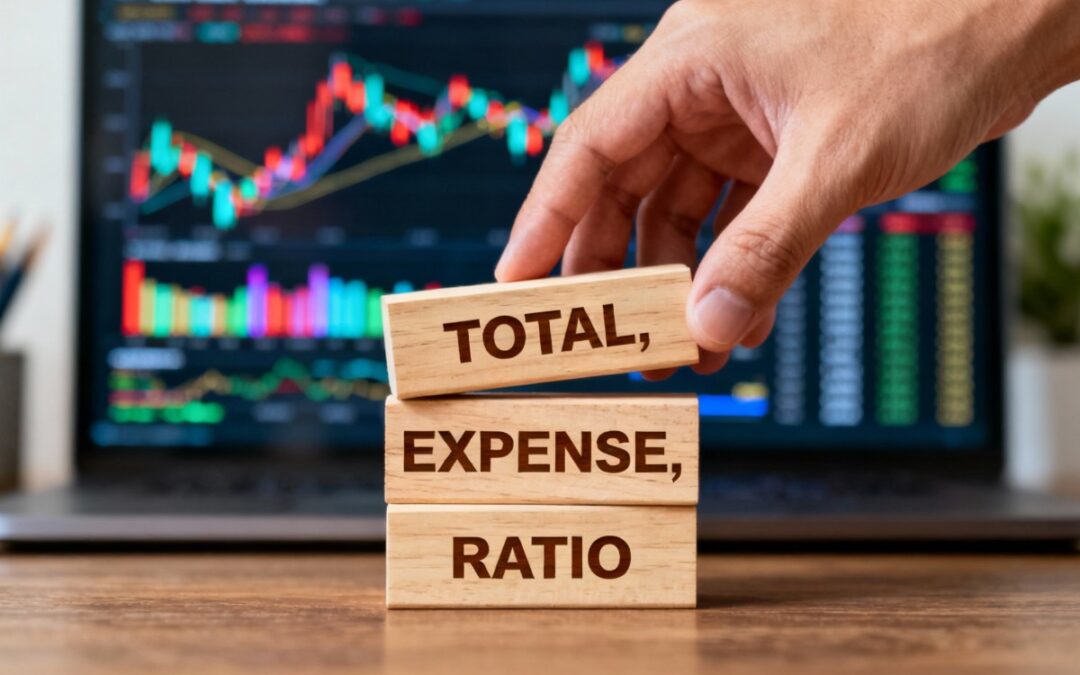You’ve done the hard part: you’re saving, you’re investing, and you’re building wealth. But there’s a sneaky, often overlooked cost in your portfolio that quietly eats away at your returns year after year. It’s called the expense ratio, and understanding it is one of the easiest ways to keep more money in your pocket.
What Is an Expense Ratio and How Does It Work?
An expense ratio is the annual fee charged by a fund (like a mutual fund or an Exchange-Traded Fund, or ETF) to cover its operating and administrative costs (Vanguard).
Think of it this way: when you invest in a fund, you’re buying a piece of a professionally managed portfolio. That fund has bills to pay, including:
- Management fees (paying the portfolio manager)
- Administrative costs (record-keeping, compliance)
- Marketing and distribution fees
The expense ratio represents all these costs rolled into a single percentage.
The critical thing to know: This fee is not taken out of your account as a line item. Instead, it is automatically deducted from the fund’s total assets before returns are calculated and distributed to you.
For example, if a fund has a 10% return on the year and an expense ratio of 1.0%, the return you actually receive is 9.0%.
Why Small Expense Ratios Can Have a Big Long-Term Impact
Many investors see an expense ratio of 0.50% or 1.0% and think it’s negligible. This is where the long-term compounding effect turns a seemingly small fee into a major drag on your wealth.
Let’s look at two hypothetical scenarios over 30 years:
| Scenario | Annual Return (Before Fees) | Expense Ratio | Net Annual Return | Total Savings After 30 Years (on a $10,000 initial investment) |
|---|---|---|---|---|
| Fund A | 7% | 0.25% | 6.75% | $71,532 |
| Fund B | 7% | 1.00% | 6.00% | $60,226 |
In this simple example, a difference of just 0.75% in the annual expense ratio results in over $11,300 less in Fund B after 30 years. That’s money you paid to the fund manager that never had the chance to compound for you.
When you’re dealing with hundreds of thousands of dollars, these small fractions become significant, irreversible losses.
Past performance is not indicative of future results. Lower expense ratios may not always result in higher returns.
How to Find and Compare Your Fund’s Expense Ratios
As a general rule, lower is almost always better. When evaluating a fund, you should be able to find its expense ratio in its prospectus or on the fund company’s website.
1. The Low-Cost Advantage of Index Funds and ETFs
In the modern investing world, the cost of funds has dropped dramatically, especially for passively managed index funds:
Passive Funds (Index Funds & ETFs): These funds simply track a market index (like the S&P 500). They require minimal management, meaning their expense ratios are usually the lowest, often ranging from 0.03 % to 0.15 %. This is where most long-term investors should start.
Active Funds: These funds employ a team of managers attempting to “beat the market” by actively picking stocks. Their expense ratios are significantly higher, often ranging from 0.50 % to 1.50 % or even more.
2. When Paying a Higher Expense Ratio May Be Justified
Is a high expense ratio ever worth it? Sometimes, but rarely.
A higher fee might be justified if the fund is in a niche area (like micro-cap international stocks) or if the fund manager has a proven, decades-long track record of consistently outperforming their benchmark after accounting for their higher fees. For most broad, diversified strategies, a low-cost index fund might be the smarter choice.
Adding Value: The Role of a Fiduciary Advisor
One of the most reliable ways to ensure you maintain a low-cost, high-efficiency portfolio is to work with a Fiduciary financial advisor.
A fiduciary is legally required to act in your best financial interest at all times. For your investment portfolio, this means they don’t just build a strategy; they are obligated to screen the entire market for funds that align with your goals and have the lowest appropriate fees.
For many, the value a fiduciary provides often outweighs their advisory fee because they ensure your money is working as hard as possible by keeping those costly expense ratios to a minimum. Their experience helps you avoid the silent drag on returns, allowing more of your capital to benefit from the power of compounding over decades.
The Bottom Line
Expense ratios are an annual fee that acts like a drag chute on your investment returns. Since fees are guaranteed and returns are not, minimizing your expenses is one of the most reliable ways to increase your long-term wealth.
Before buying any new investment, whether it’s a mutual fund, ETF, or a specific share class, take a moment to look up its expense ratio. That tiny number could be the most important factor in determining your portfolio’s success over the next few decades.
This information is intended for general educational purposes only. Please consult with a financial professional to determine what is suitable for your individual circumstances.
Speak With a Financial Advisor
Do you have questions about the expense ratios in your current portfolio, or are you looking for strategies to reduce your overall investment costs? Reach out to schedule a portfolio review!
Sincerely,
James C. Baldwin
If you found this article helpful, you may also enjoy reading:
- Fiduciary vs. Financial Professional: What’s the Difference?
- Avoiding the Most Common Financial Planning Mistakes
- Understanding Dividends: Qualified vs. Non-Qualified and Their Tax Implications
Sources:
https://investor.vanguard.com/investor-resources-education/education/expense-ratio
https://www.tatacapitalmoneyfy.com/blog/mutual-funds/total-expense-ratio/


